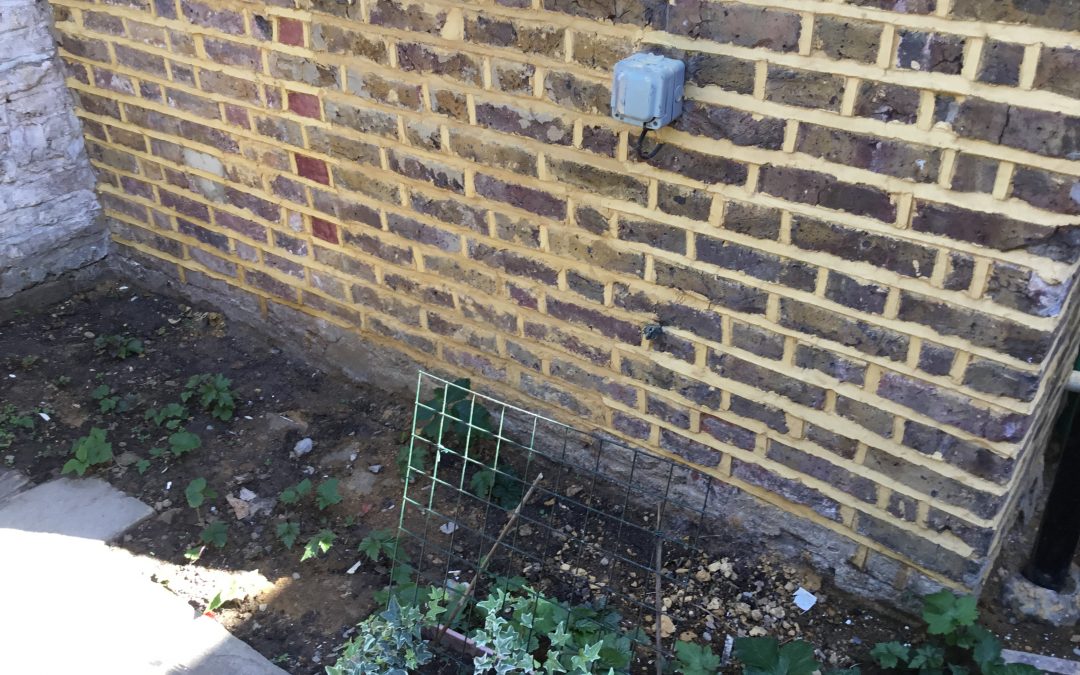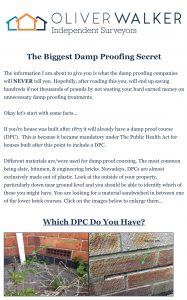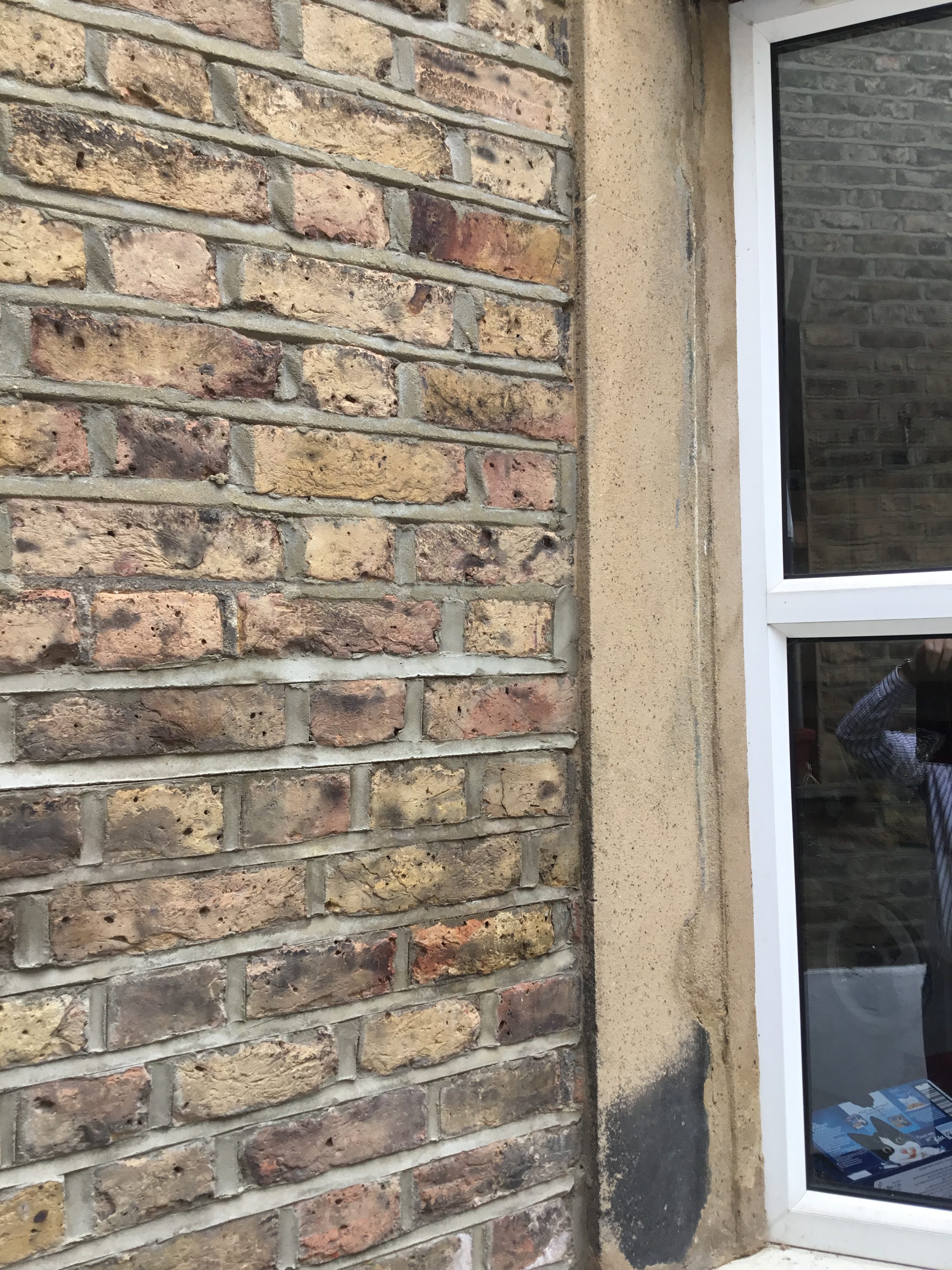
Cement pointing on a Victorian property
Having visited many old houses during my career, I have on numerous occasions seen examples of where external mortar joints have been re-pointed using modern Portland cement in place of what would have originally been a lime-based mix. It is quite common for old lime joints to be condemned prematurely due to being soft and powdery in comparison to hard cement joints, this however does not necessarily mean that they have failed. It is important to keep in mind that lime mortar joints should be seen as a sacrificial element and only need replacing when and where the joints are so badly eroded that rainwater can sit in the gaps. It is now generally understood that because cement is so tough and waterproof, it has the potential to cause damage when used in older buildings by blocking moisture from escaping which results in trapping the moisture within the walls. In Victorian times, kiln fired bricks were heated at much lower temperatures in comparison to the way bricks are made today and because of this these bricks were relatively soft and permeable. Going back further in time, stone work that was used in traditional buildings was and still is fairly porous. When used in conjunction with the slightly weaker lime mortar that was used in older buildings, this was not a problem as the mortar joints would act as a channel for which moisture could escape. Any rain water absorbed by the brick work could easily evaporate over time. As moisture will always take the easiest route out of a wall (and sometimes in!), if the mortar is too dense or strong, it will be forced to escape via the brick or stone work. This can cause all sorts of problems to the brick itself and is often why we see “spalling” where the face of the brick is missing or seemingly “blown”. This commonly happens when moisture is trapped within the brick work and expansion occurs from frost.
The photo below shows an early Victorian building where different attempts have been made at replacing the mortar joints along with some severe damage and spalling to the bricks themselves – a shining example of why to avoid using modern techniques where a more considerate traditional craft approach would have been preferable: 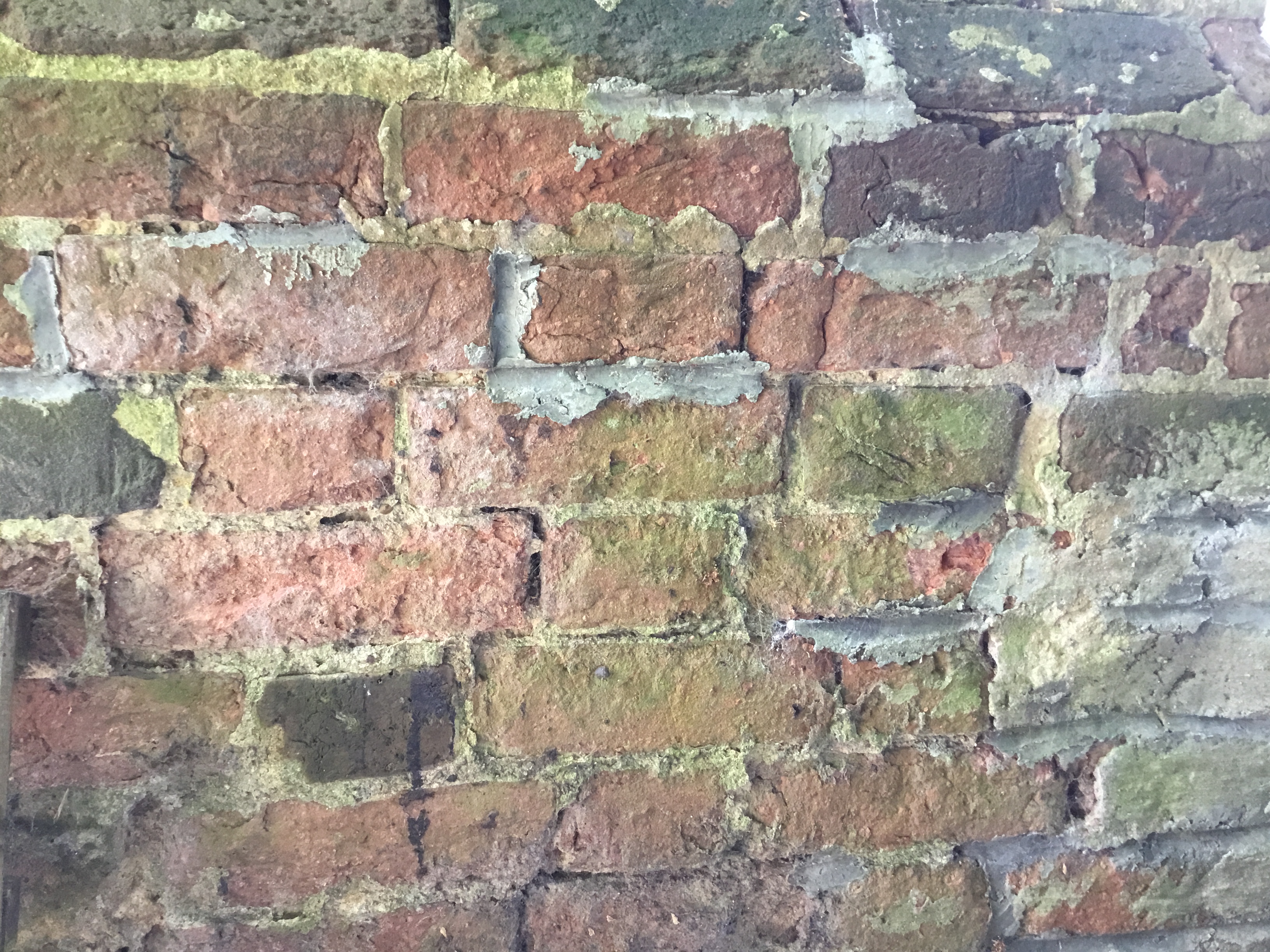 Here you can see where I have removed some of the modern sand and cement mortar joints to reveal the original lime based mix that is visible as a lighter slightly yellower colour.
Here you can see where I have removed some of the modern sand and cement mortar joints to reveal the original lime based mix that is visible as a lighter slightly yellower colour.  The mortar used in most Victorian buildings was made from lime and sand mixed to roughly a 1:3 ratio. Sometimes other additives such as ash were used in order to achieve a darker shade. Whilst cement was indeed used in some late Victorian and Edwardian buildings it was certainly not as dense and impermeable as modern Portland cement. Lime pointing is a traditional skill which has been lost to certain degree as most builders today will not be familiar with this and may lack the experiential skill required in applying such methods. Portland cement has now replaced lime for new work as it is stronger and sets quicker making it easier to use. It is however also very brittle and where older buildings have shuffled around on their shallow foundations over the years, amazingly the bricks have not cracked or broken. This is because of the incredible flexibility offered by lime mortar that accommodate small cracks. Keep in mind the abov
The mortar used in most Victorian buildings was made from lime and sand mixed to roughly a 1:3 ratio. Sometimes other additives such as ash were used in order to achieve a darker shade. Whilst cement was indeed used in some late Victorian and Edwardian buildings it was certainly not as dense and impermeable as modern Portland cement. Lime pointing is a traditional skill which has been lost to certain degree as most builders today will not be familiar with this and may lack the experiential skill required in applying such methods. Portland cement has now replaced lime for new work as it is stronger and sets quicker making it easier to use. It is however also very brittle and where older buildings have shuffled around on their shallow foundations over the years, amazingly the bricks have not cracked or broken. This is because of the incredible flexibility offered by lime mortar that accommodate small cracks. Keep in mind the abov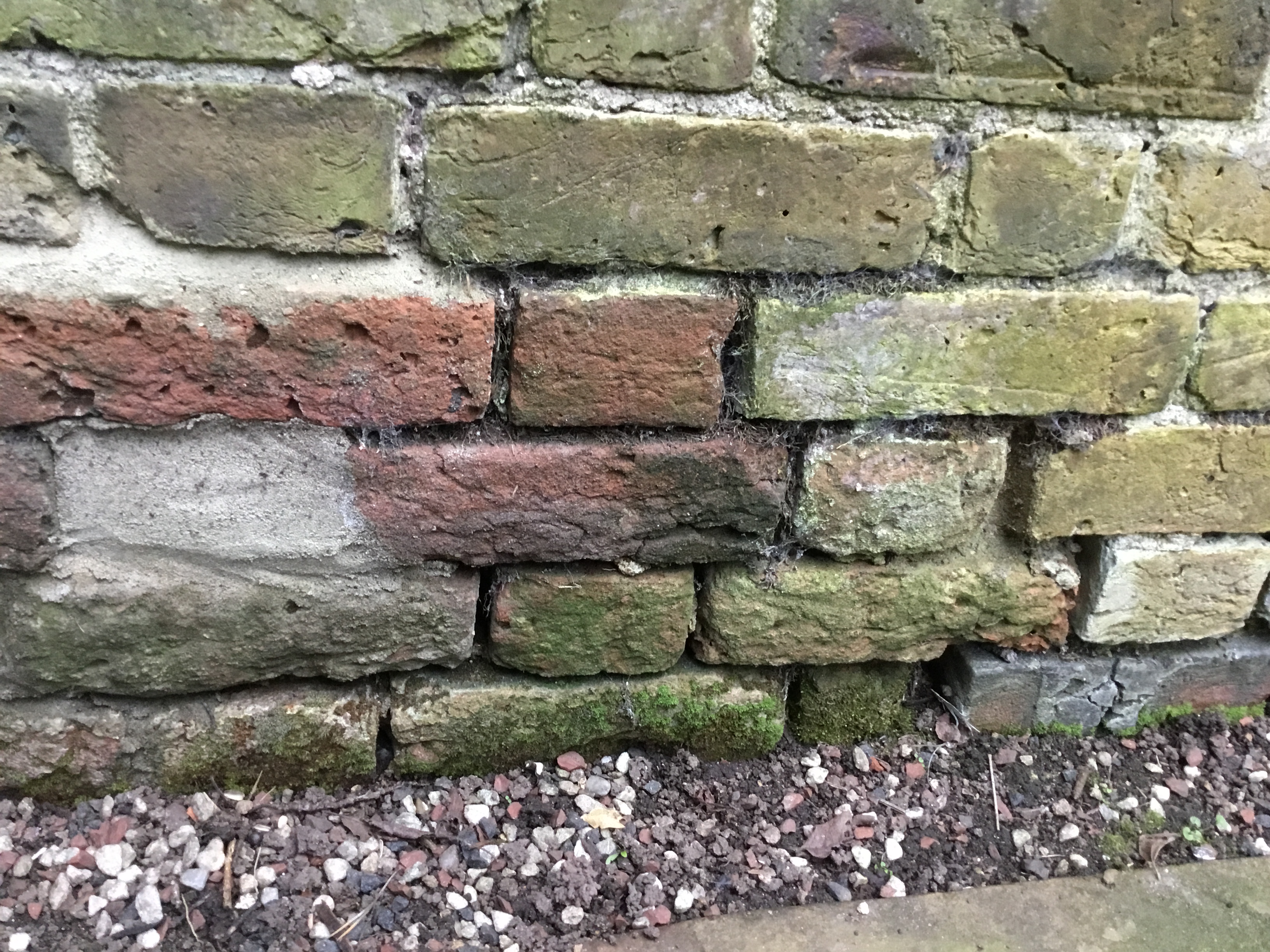 e when giving consideration to replacing external pointing on your traditional property. Repointing of historic lime joints should only be carried out if the existing mortar is weathered and decayed to the extent that it is missing.
e when giving consideration to replacing external pointing on your traditional property. Repointing of historic lime joints should only be carried out if the existing mortar is weathered and decayed to the extent that it is missing.
Remember that the lime mortar joints are acting as a sacrificial element and should only require replacement about every century. One should certainly avoid replacing a wall built using lime mortar with modern cement based materials.
Lime putty which is available in ready mixed plastic containers is the best way of buying as the pre-mixed quality is more consistent.
When carrying out external repairs on the brick work to your period property, give careful consideration to using the appropriate tradesman with the requisite skills. You will most likely pay more for this type of work but if your house is pre-1920s and has solid walls as opposed to cavity walls then you will be making a sound investment in choosing to use lime when carrying out repointing works.

Beautiful weathered finish courtesy of E.Collins Pointing Specialist
